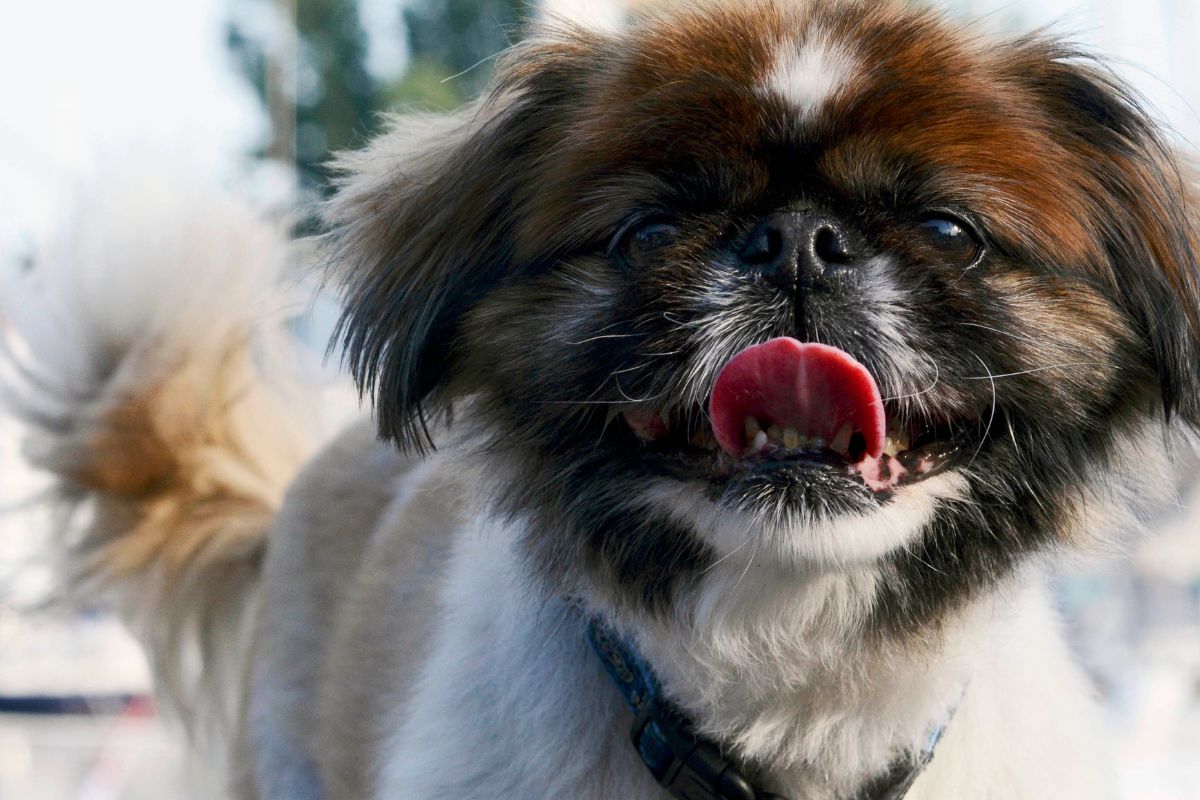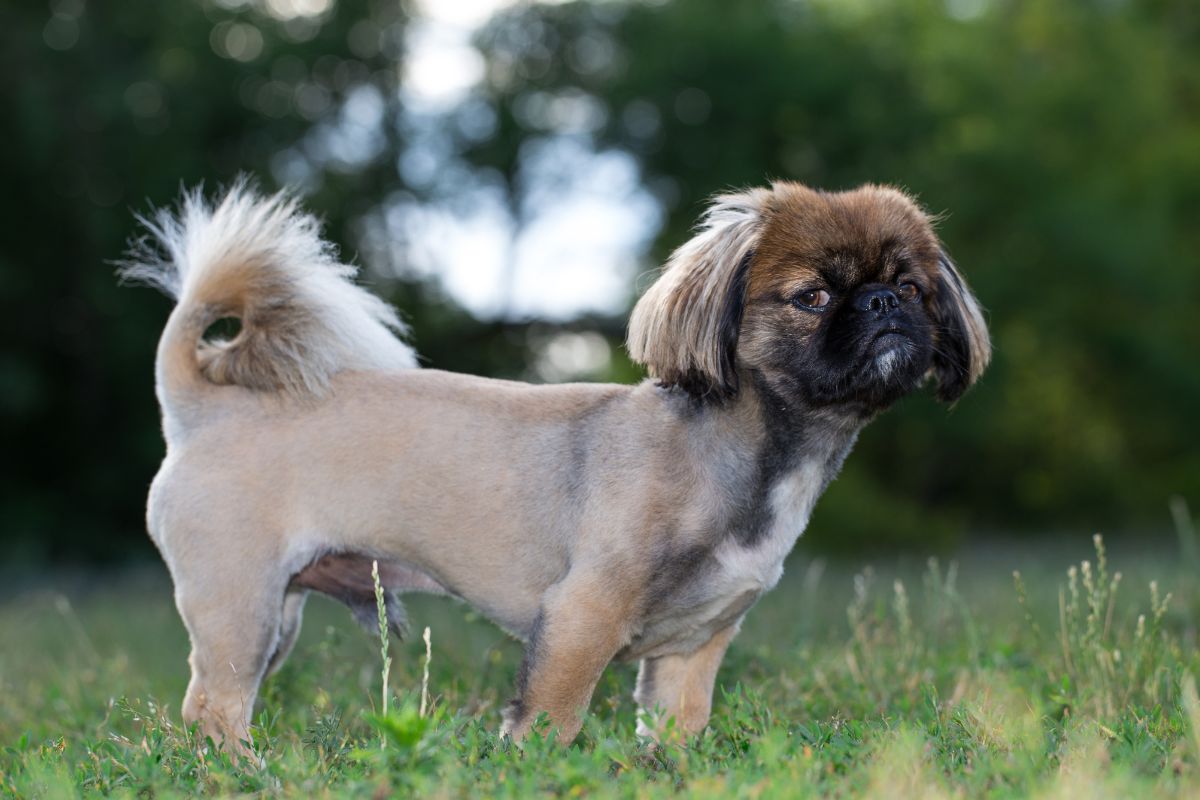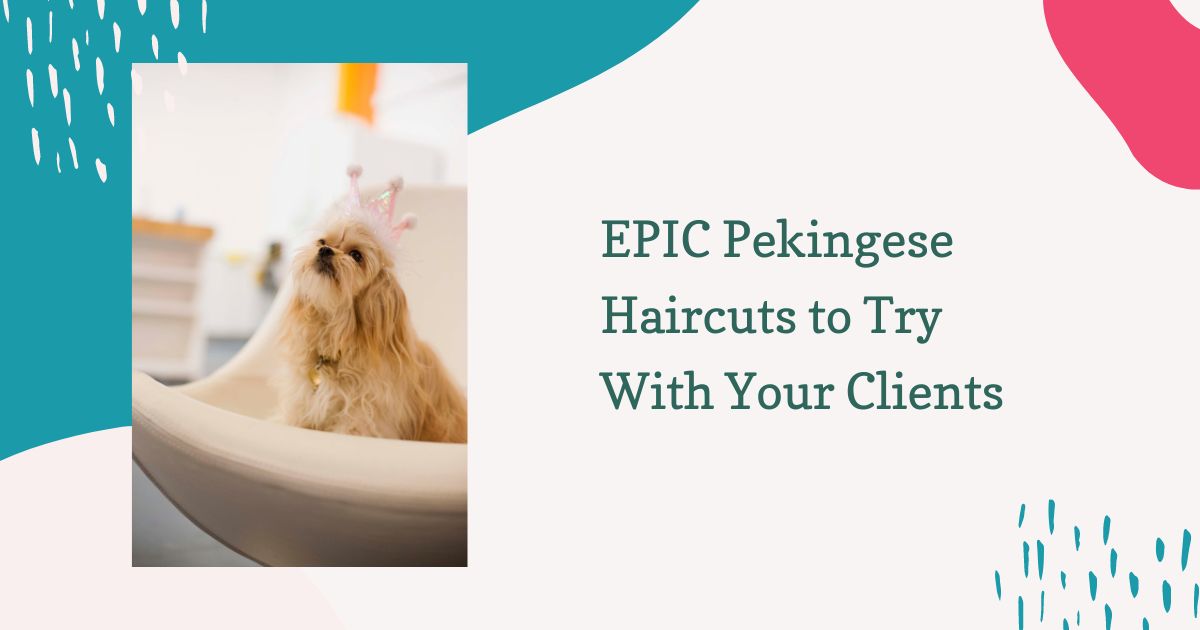Exploring Pekingese Haircuts
Are you thinking about giving your Pekingese a new look? Pekingese haircuts might seem daunting if you’ve done one. With several popular ones available, it comes down to picking the one you like, grabbing the appropriate tools, and getting down to business.
The effort will be worth it, seeing s the result is less shedding and much easier routine grooming and maintenance.

Do Pekingese Shed?
Pekingese dogs are heavy shedders, which makes regular grooming and frequent haircuts a necessity rather than a luxury. While they are not known to cause any specific allergies, their shedding might inconvenience some people from this aspect.
Their coat consists of two layers: a soft undercoat of thick, soft and short hairs and a straight, long-haired, coarse-textured outer coat. While Pekingese will regularly shed, in warmer climates or months, the undercoat will shed a lot more excessively.
Regular brushing, bathing, and blowouts help deal with Pekingese shedding. Most Pekingese haircuts also focus on eliminating the shedding problem while giving your little lion an attractive look.
Our Top Pekingese Grooming Tips
Regular grooming is a must regardless of the Pekingese haircuts you choose for your miniature lion’s mane. By regular, we mean daily (preferably) or, at least, every couple of days. The longer the coat is, the more frequent the grooming needs to be.
The main reason for grooming is the coat’s and skin’s sustained health. Mating is a foundation for numerous skin diseases, especially when left unchecked.
The accumulation of dirt, which also happens every time they go out, given the Pekingese’s small stature and proximity to the ground, is another potential source of maladies. It also makes the coat rougher and more brittle, eventually damaging the hairs.
Grooming a Pekingese involves bathing, blowdrying, and brushing, in that order. While bathing and blowdrying are not mandatory every day or two, you should try to do them at least once a month.
Bathing
Bathing a Pekingese requires quite a bit of practice at first but becomes easy as you get accustomed to it. The key points are to keep water from entering the nose and ears when bathing the head and neck.
While you can plug the ears, it will be uncomfortable for your dog, so washing the head and neck with low water pressure and care is best practice.
Washing the remainder of the coat is pretty straightforward – wet it first, then apply dog shampoo (do not use human shampoo). Make sure you work the shampoo in the coat, given that it is quite dense.
After thorough rinsing, blowdry the coat with an HV dryer. The type of Pekingese haircuts and length will determine how long you need. In any case, you should hold the nozzle far enough to avoid tangling the hair.
Brushing
When brushing your Pekingese, work in sections, meticulously untangling each before moving on to the next. A bristle or pin brush works great, while a slicker one is best for removing mats.
A cool trick is to go over the entire coat with your hands after brushing, checking for inconsistencies. If you find any, use a firmer brush to deal with them. Specific tangle areas in Pekingese dogs are behind the ears, the thighs, the tail, and around the ruff.
For daily brushing, a detangler spray is really helpful.
The Different Types of Pekingese Haircuts
So, what are your options when it comes to Pekingese haircuts? There are several Pekingese haircut styles you can explore for your furry little emperor.
The main question you want to answer is if you wish to cut your Peke’s hair short or long. If you opt for the former, the Teddy Bear Cut and Lion Cut are the best short haircuts for Pekingese dogs. If it is the latter you like better, go for the Show trim and the Blandin as the best Pekingese haircut styles for your dog.
Basic Pekingese Trim (Show Trim)
The Show Trim is one of the most popular styles of Pekingese haircuts. It provides the dog with much-needed trim and is acceptable in dog shows, requiring the dog’s coat to have a natural appearance.
The show trim, also known as the basic trim, defines the body line of your Peke. It is the easiest Pekingese haircut you can easily do at home. It shortens the long outer layer of the Peknigese’s coat and thins out the bottom layer without changing the dog’s appearance too much.
Blandin
The Blandin is one of the long-hair style Pekingese haircuts and requires some experience. It is a multi-level haircut, allowing shorter hair to blend in with longer hair at specific points, like the dog’s back and chest.
You will need a special pair of shears and lots of patience for this haircut.
Lion Cut
The Pekingese lion cut is another trendy Pekingese hairstyle. It probably has to do something with the legend of Buddha creating the Pekingese breed by shrinking down a lion.
This cut is short, starting from the shoulder blades and going back all over the Peke’s body, legs, and halfway up the tail.
You then trim the air around the dog’s neck and head to resemble a lion’s mane. Trim the hair on the tip of the tail just a little to emphasize the similarity to a lion.
The only drawback with this one is that it is not acceptable at dog shows.
Mohawk
You can always get creative and go in-between styles of Pekingese dog haircuts. For example, when going for a short trim, you can opt to leave a mohawk on the top of your dog’s head and even go as far s dying it.
Teddy Bear Cut (Pekingese Puppy Cut)
A popular short trim, the Pekingese Teddy Bear Cut is popular and very good for summer or dogs living in warm and humid environments. It is also referred to as the Puppy Cut because it makes the dogs look youthful and fresh.
For this very short trim feature, you aim to trim the hair all over the dog’s body, legs, tail, head, and ears at 1 or 2 inches / 2.5 to 5 cm. While this is easy to achieve with a clipper, cutting the initial fluffy hair with shears can be difficult.
The teddy bear resemblance comes from the prominent features of the head and ears once you remove the fluffy coat.
This one is also not acceptable at dog shows.
Top-Knot
With longer hairstyles, like the Blandin or the Show Trim, you can tie the hairs on the top of the head together with a band, getting a top-knot which is very popular with Pekingese dogs.
Decorattive Accesories
Last but not least, you can opt for any decorative accessories that pop into your mind. These include (but are not limited to) flowers, hats, caps, rhinestone bows, hairpins, wreaths, etc.

A Pekingese Breed Description
The Pekingese is a decorative companion breed. It is one of the oldest decorative dog breeds in the world, initially being the companion to Chinese imperial family members.
A curious fact is that in China, only royalty was allowed to have a Pekingese dog – ordinary people could not. The members of the imperial court took things so far that the penalty for stealing a Pekingese was death.
While not entirely held in the same regard nowadays, the Pekingese is still one of the world’s most popular decorative dog breeds.
Pekingese dogs are small and compact (6 to 9 inches / 15 to 23 cm.) but relatively heavy for a small breed (up to 14 pounds / 6.5 kg). They have a flat face (brachiocephalic breed) with an envelope-shaped head that is wider than long. The eyes are large, sparkly, and dark, slightly exophthalmic.
The coat is longest at the neck and shoulder area, giving the Pekingese its popular lion-like appearance. The coat comes in various red shades, ranging between golden-red and darker red variations.
Pekingese dogs move with a recognizable rolling gait (shifting their weight from side to side more than necessary), completely fitting their royalty status.
From a character standpoint, the Pekes are pretty independent but develop strong bonds with their favorite “pawrent.” They are confident and charming companions that are always alert, making them great as watchdogs.
Pekingese dogs are pretty susceptible to training, playfulness, and adaptability. They do not bark too much and have medium energy levels, which, in combination with their size, make them perfect for life in apartments and flats.
While Pekingese are tolerant, they do like to maintain their boundaries. That means they will be patient with children but might snap if frightened, which is not too difficult given their size.
Why Should I Cut My Pekingese’s Hair?
A key reason for cutting your Pekingese hair is health reasons. In warm climates, the thick, long coat of Pekingese dogs have put them in danger of heatstroke.
Since dogs do not sweat across their body and, apart from hyperventilating, tend to lie on cold surfaces to cool down during hot seasons, you will help your pet immensely by going for a short-style haircut.
If seasons change, go for one of the short Pekingese haircuts in late spring, and change it to a longer one when fall arrives.
Apart from health concerns, easy coat maintenance and aesthetics are reasons people opt to cut their Pekingese hair.
Tools Needed for Grooming This Breed
You will need some essential tools if you want to try your hand at any of the Pekingese haircuts we outlined above.
Clippers are crucial, as they will do most of the work, regardless of hairstyle. Dog clippers with several different lengths of plastic guard combs are a must.
When it comes to shears, choices are abundant. Opt for a pair of small shears for the basic work. If you want more precision, you will also need a pair of thinning and curved shears.
Given that you need to bathe and dry the dog off before trimming, all the other tools, like brushes, combs, and hair dryers, are listed in the grooming section.
Our Step-by-Step Guide for DIY Pekingese Cuts
Make sure your dog is standing during the entire trimming process.
You can change between clippers and shears as needed, but it is best to go over the largest area with clippers, get a uniform cut, and proceed to do finer trims with the shears.
- The first thing to do, especially if you haven’t cut your pets’ hair in a while, is to bathe them.
- Following the bat, proceed with blowdrying and brushing them, just like you would when grooming.
- Once you complete this, the first thing to take care of is the hair on the paws. Make sure you shorten it to the pads. Proceed up the legs to knee/elbow level.
- The inside of the things and the groin is next. Trim one side first, lifting the hind leg, then the other.
- The underbelly and chest are next, switching sides until you get the trim you are after.
- Proceed to trim the back, making sure the length on the back, chest, and sides is symmetrical.
- The tail and the portion of the hindquarters are next around the butt.
- The head and ears come last, as they most often are the defying feature of Pekingese haircuts.

A Final Word
When looking to give your little Peke a distinct look, picking one of the popular and established Pekingese haircuts is your best bet. Long or short, you can even do it yourself with the right tools and some patience.
Regular trims, along with frequent grooming, will ensure your Pekingese looks like the member of the imperial court it is.

